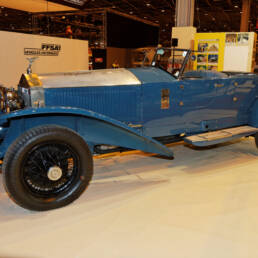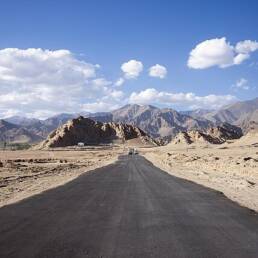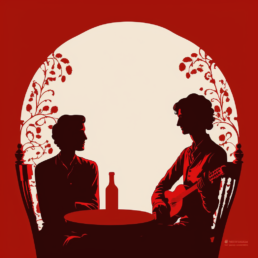Tobacco, from South India, once made an appearance in a case investigated by probably the world’s most famous detective. It’s also found its way into the hands of some of the most influential people of the 20th century.
The cops of the Scotland Yard were quite bemused. Mr. Holmes then says, ‘There has been a murder and murderer was a man. He was no more than six feet high, was in his prime of life, had small feet for his height, wore coarse, square-toed boots and smoked a Trichinopoly cigar’.
The line, from Arthur Conan Doyle’s ‘A Study in Scarlet’, introduced us to the enviable genius of Sherlock Holmes and Dr. Watson. However, me must pay heed to the cigar and how it wound up in London, all the way from India’s South Coast.
Its journey begins, unsurprisingly, near Tiruchirappalli in Southern India, where in the late 19th century, British officers found something unique – locally produced and hand-rolled cigars measuring up to 6 inches with the right proportions of flavored tobacco known as ‘surruttu’.
Suruttu is derived from ‘churuttu’ which literally means rolling up. The Tobacco was sourced from nearby Dindigul, Karur, Bengal, even Cuba, and then kept in a tub filled with juices or apple and mango and left to ferment for years.
The Surruttu turned out to be an aromatic but tamer version of its Cuban counterpart, the infamous Havanas. The cigars became so popular that people in London were inquiring about it.
Spencers started making them in the 1880’s. Eugene Oakshott, who owned Spencers at the time, bought around 60 acres of land in Dindigul to expand & meet the rising demand. ‘Gold Mohur’, ‘Flor de Spencer’, and ‘Little Randolph’ were just some of the famous cigars sold by them.
At the start of the 20th-century, companies like Fenn Thompson & Co. and Hunter & Co. came up and started producing Trichy Cigars at a mass scale, exporting them to every nook and corner of the Empire.
The prices were more aggressive than its competitors, like the ‘La Corona’, but Trichy Cigars were selling like hot cakes. At it’s peak, almost 4000 cigar manufacturing units were there in and around Trichy, mostly in the locality of Woraiyur.
Solai Thevar, a Trichy local who founded Fenn Thompson, not only understood the value of the product but also how to market and brand it. Most of the companies operating in and around Trichy at the time had English names since they mainly catered to British customers.
With that kind of popularity, it was hard to keep the Trichy Cheroot out of popular culture. ‘A Study in Scarlet’ published way back in 1887 mentions it and then so does ‘The Sign of Four’ published in 1889.
In Chapter III of ‘The Unpleasantness at the Bellona Club’, by Dorothy L. Sayers published in 1928, detective Lord Peter Wimsey was seen drinking an expensive old port and slandering someone who spoiled it with a Trichinopoly.
But Trichy cigar’s most intriguing connection is probably with Britain’s wartime Prime Minister, Winston Churchill. Churchill was a true connoisseur of Cigars, especially of the Havanas. He was rarely seen without one.
When World War II broke out, the Nazi forces quickly moved to disrupt trade and the movement of essential goods along the Atlantic coastline. This worried Britain as among the essential cargo were also crates of Churchill’s beloved Havanas which were not getting delivered.
Seeing the situation unfold, the Governor of Madras was tasked to set up a new post titled ‘CCA’, by the power given to him through the Defense of India Rules. It was thought at the time that CCA meant Confidential Assistant, but only the governor knew its true and covert purpose.
CCA was believed to have actually meant Churchill’s Cigar Assistant. His job was to procure the finest Trichy Cigars and send them across all the way to 10 Downing Street. It’s believed that Churchill really developed a liking for the mild Trichy.
With records that probably don’t exist, it cannot be said for sure that the incident actually happened. Nonetheless, it adds to the legend and myth of the Trichy Cigars.
Presently, heavy taxes and restrictions from successive governments have led to the crumbling of the once famed Cigar manufacturing hub of Trichy. Few companies still exist but it’s safe to say that they have seen better days.
The cigars however, still pack a punch.
Sources:
https://www.thecitizen.in/index.php/en/NewsDetail/index/9/17312/The-Trichinopoly-Cheroot–?infinitescroll=1 by Rashmi Oberoi, https://www.firstpost.com/india/the-last-drags-of-a-famed-trichinopoly-cigar-6352711.html by Nikita Doval, https://beyonder.travel/india/trichinopoly-cigar-india/ by Anand Parameswaran, http://cigarblogindia.blogspot.com/2015/04/the-journey-of-trichinopoly-cigar.html, Facebook page of Fenn Thompson.




